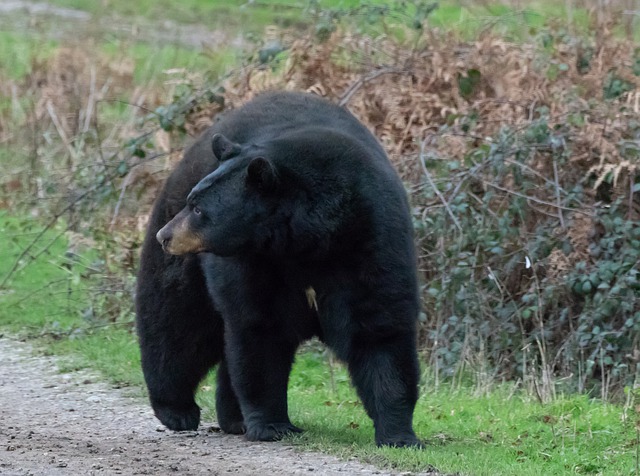How to Tell If a Bear Has Been in the Area
Sep 8th 2021
 While bears aren't always aggressive creatures, they're still large enough to impact an unprepared cabin. If you're exploring a wooded area, you'll want to know what sorts of signs and conditions give away local brown and black bear activity.
While bears aren't always aggressive creatures, they're still large enough to impact an unprepared cabin. If you're exploring a wooded area, you'll want to know what sorts of signs and conditions give away local brown and black bear activity.
Signs of Bears in Your Area
Bears don't make for unpleasant neighbors, but you'll still want to know whether one's recently moved into the neighborhood. Some signs that you may have a bear in town include:
Visible Tracks
One of the simplest ways to find a bear is to look for its tracks. A bear's paws tend to be between four and seven inches in length with their claws extended. Bears have five toes, as well, distinguishing them from wolves and other canines. A bear's back feet also tend to look different from its front feet. The rear feet are often triangular, whereas its front feet are round.
Notable Droppings
While it's not always glamorous to distinguish a bear by its droppings, you always have the option to. Bear droppings are fairly distinct when compared to those left behind by deer or even coyotes. When looking around your yard or the general area for signs of bears, look for droppings that are larger than average. These droppings tend to be tube-shaped and contain undigested fruit or seeds.
Marked Trees
Bears don't mark trees to distinguish their territory. In fact, most bears aren't territorial creatures. Rather, bears will claw trees to sharpen their claws and to leave their scent behind. If you're trying to determine whether a bear is in your area, you can look to the trunks of your local trees for clues.
The claw marks that a bear leaves behind tend to parallel one another and come in groups of four. The marks tend to be deep, revealing a significant amount of wood beneath the tree's bark. What's more, these marks tend to be higher up than they would be if left by a coyote or even a wild cat. Look roughly halfway up a tree to spot these marks, and you'll have a good idea as to whether any bears are in your neighborhood.
What Attracts a Bear to Your Area?
Bears don't appear in strange locations for no reason at all. Certain conditions make even residential spaces particularly appealing to bears. These include:
Loose Food
If you leave food unattended, either in a trash can or around a campsite, then hungry bears may start to come your way. Bears that are especially used to being around humans know when to take advantage of a free meal, so make sure you lock your trash bins and store your camping food well off the ground.
Strong Smells
Bears don't have a reputation for being curious, but they do tend to follow their noses. If your cabin or campsite has a particularly strong smell, especially if it's food-like, then there's a good chance that you may attract a brown or black bear.
In Conclusion
When you leave bears alone, they tend not to be a bother. That said, when you can identify the signs of local bear activity, you'll have a better chance of protecting yourself and your loved ones, if necessary.

